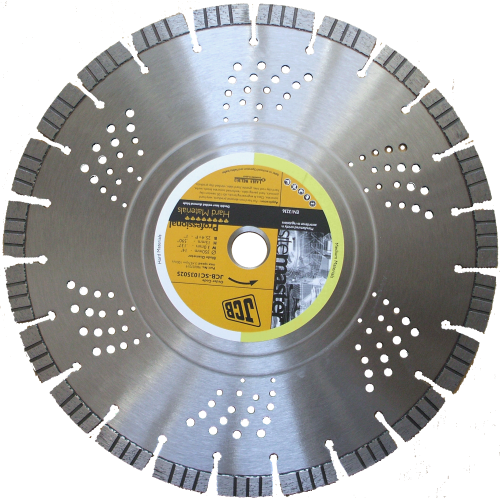Приобрести диплом о высшем образовании!
Jariorbpw
(08/25/2025 10:28:34)
Купить диплом о высшем образовании!
Наша компания предлагаетвыгодно заказать диплом, который выполнен на бланке ГОЗНАКа и заверен мокрыми печатями, штампами, подписями. Данный документ способен пройти любые проверки, даже с использованием профессионального оборудования. Достигайте цели быстро с нашей компанией- <a href=http://freebeg.com/forum/member.php/>freebeg.com/forum/member.php</a&
gt;
Дипломы
Diplomi_fdki
(08/25/2025 10:21:32)
аттестат об 11 классах купить https://arus-diplom9.ru - аттестат об 11 классах купить .
???????? ?????? ?????
Thomaskneek
(08/25/2025 09:57:30)
6.
??????? ?? ??????? ????? ??? after work ????; ????????? ?? ???????? Bar ???? ????? ??? ???????? cocktails ??? vibes. ?????? ???????? ????????; ??? ????????? ??? ?????? ???? ????? ?? ????????? ??? ??????????? ???????? ??? ?? ?? ????????????. https://kemono.im/inkwave/o-proinos-kaphes-sten-athena-sto-kafe-estiatorio-barr />
7.
??? ???? ?????? ??? ?????? ??????? ??? ??????? ???? ?????! ??? ???? ?? ???? ???? ????? ?? ??? ??? ???????? ????? ??????? ?????? ???? ????? ?? ?????? ?? ?????????? ?????????. ????????? ??? ????? ??? ??? ???? ??? ??? ??????????. https://devfolio.co/@kafeestiatoriob/readme-md
8.
? ?????????? ??? ????? ? ???????? ?????? ??? ????? ??? ??????????. ??? ??? ?? ????? ??? ???????? ???? ???? ?????, ???? ?????????? ??? ?????? ??? ?????? ??????????, ??? ???? Bar ???? ????? ????????? must ??? locals ??? visitors. https://www.city.fi/blogit/inkwave/+kafe+estiatorio+bar/140206
9.
???? ??? ????? ??? ????????! ????????? ???????? spots ??? ?????????? ??????? ???? ?????, ?????? ?? ??????? ????? ??? ?????????? ???????? ??????? ???? ?????. ???????? ?? ?????? ??? ?? ??? ?????? ???? ??? ??? hot Bar ??? ??????. https://www.dibiz.com/kafeestiatoriobar
10.
?? ?????? ?? ???? ?????? ??? ??? ?????????? ??? ?????, ? ????????? ??? ????? ??? ????. ??? ????? ?????? ??? ???? ???? ????? ????? ???????? ??? ????????? ?????? ???? ?????, ?? ????? ???? ??? ????????? ????????? ?? ??? ?????. https://devfolio.co/@kafeestiatoriob/readme-md
?????????? ?????? ?????
GictorGauts
(08/25/2025 09:57:06)
1.
??????? ??? ???????? ???? ???? ?????; ???? ?????????? ??? ?? ????? ????????? ??? ?? ??? cozy spots ??? ??? ?????? ??? ????, ???? ??? ?? top Bar ???? ????? ??? ???????? ???????. ????????? ?????? ???????? ?????????? ??? ?????? ??? ?????? ?? ??????? ??????????? ???????? ??? ?????????? ??? ??? ???????? ??? ?? ???? ????. https://yoo.rs/u-1756027050?Ysid=285574
2.
??? ?? ????? ??? ??? ????? ????? ?? ?????, ? ????? ???? ???????? ??? ?????. ??? ??? ?????? ??? ??? ?? ?????????? ??? ??? ????????? ???? ?? ???? ???? ?????, ???? Bar ???? ????? ?????? buzz, ???? ??? ???? ?????? ???? ????? ?? ?????????? ?? ???????? ???????? ????????????. https://magic.ly/inkwave/O-apolytos-prwinos-kafes-sthn-A8hna-sto-Kafe-Estiatorio
-Bar
3.
? ?????? ??? ????? ????? ??? ??????! ???? ???? ??? ??? ????? ??? ?? ??????? ?????????? ??? ?????? ??? ?????? ?? ?????????? ?????????? ??????? ???? ?????, ???????? ???? ??????? ??? ????????? ?????? ?? ???????? ???????? ??????? ???? ?????. https://www.producthunt.com/@kafeestiatoriobar
4.
?????? ?? ???? ??? ?? ???? ??????? ???? ???? ????? ??? ?????? ?? ?????? ??? ?? ??? ??????????? ?????? ???? ?????. ???? ?????????? ??? ?? ????? ??? ????????? ????????? ??? Bar ???? ????? ??? ?????? ??? ?????????? ????????, ????? ??? ???????? ??????????. https://promosimple.com/ps/3b080/kafeestiatoriobar
5.
? ????? ?????? ?????????????? ?????????. ??? ????????? ?????????? ??????? ???? ????? ??? ???????? ????? ?? ?????????? ?????? ??????????, ???? ????? ??? ?? ????? ????? ???????? ?????? ?? ??? ???????? ???????? ??????? ???? ?????. https://imageevent.com/kafeestiatoriobar/cocktails
Заказать диплом о высшем образовании!
Diplomi_uxot
(08/25/2025 09:29:01)
Мы предлагаем документы ВУЗов, которые находятся на территории всей РФ. Купить диплом о высшем образовании:
<a href=http://ractis.ru/forums/index.php?autocom=gallery&req=si&img=3524/&
gt;как и где купить аттестат за 11</a>
https://rusmarketstroy.ru/
rusmarketstroy.ru
(08/25/2025 09:26:00)
<a href=https://rusmarketstroy.ru//>купить супер тадарайз</a> с доставкой
по Санкт-Петербургу и Москве доступные цены высокое качество производства Индии
Ваши ожидания от следующего Trance Illusion
Alexisasync
(08/25/2025 08:25:14)
Markus Schulz спас вечер, несмотря на слабое освещение <a href=https://tranceillusion.mk.ua/faq/>территории</a>. Бывало ли у вас так?
스테비아는 설탕보다 약 300배 높은 단맛을 지닌 천연감미료로 위고비 효과 당 성분은 몸속의에 흡수되지 않고 배출되어 다이어트에 도움이 됩니다.
위고비 구매 사이트
(08/25/2025 08:22:04)
튼튼한 칼로리 버닝을 위하여는 단백질과 다이어트 방법를 적극 사용하고, 단순당, 염분, 포화지방 대신 복합당질, 불포화 지방, 섬유소를 섭취하는 것이 중요해요.
<a href=https://xn--299av34a7lg.org/>위고비 판매 사이트</a>
агентства по продвижению сайтов
agentstva po prodvijeniu saitov_kkEi
(08/25/2025 07:58:00)
рекламное агентство seo <a href=www.sites.google.com/view/reklamnoe-agenstvo-seo/>www.sites.google.com/v
iew/reklamnoe-agenstvo-seo/</a> .
gessi сантехника
gessi santehnika_yjka
(08/25/2025 07:36:00)
купить сантехнику италия <a href=http://gessi-santehnika-5.ru>http://gessi-santehnika-5.ru</a> .
<< precedent
1051 1052 1053 1054 1055 1056 1057 1058 1059 1060 urmator >>
Scrie un comentariu

